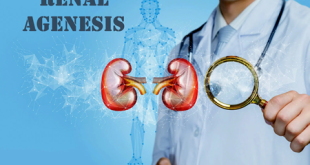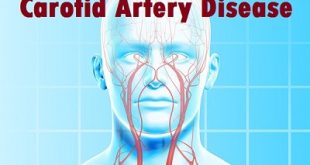Definition
Crouzon syndrome is a rare genetic disorder, also known as craniofacial dysostosis, It is a form of craniosynostosis, a condition in which there is a premature fusion of the fibrous joints (sutures) between certain bones of the skull. The sutures allow an infant’s head to grow and expand. Eventually, these bones fuse together to form the skull. In Crouzon syndrome, the sutures fuse prematurely affecting the proper growth of the skull and head and potentially altering the shape and development of the skull.
Pathophysiology of Crouzon Syndrome
Crouzon syndrome is caused by mutations in the fibroblast growth factor receptor-2 (FGFR2) gene but exhibits locus heterogeneity with causal mutations in FGFR2 (Crouzon syndrome) and FGFR3 (Crouzon syndrome with acanthosis nigricans) in different affected individuals.
Premature synostosis of the coronal, the sagittal, and, occasionally, the lambdoidal sutures begins in the first year of life and is completed by the second or third year. The order and rate of suture fusion determine the degree of deformity and disability.
Once a suture becomes fused, growth perpendicular to that suture becomes restricted, and the fused bones act as a single bony structure. Compensatory growth occurs at the remaining open sutures to allow continued brain growth. However, multiple sutural synostoses frequently extend to premature fusion of the skull base sutures, causing midfacial hypoplasia, shallow orbits, a foreshortened nasal dorsum, maxillary hypoplasia, and occasional upper airway obstruction.
Causes
Mutations in the FGFR2 gene cause Crouzon syndrome. This gene provides instructions for making a protein called fibroblast growth factor receptor. Among its multiple functions, this protein signals immature cells to become bone cells during embryonic development.
Mutations in the FGFR2 gene probably overstimulate signaling by the FGFR2 protein, which causes the bones of the skull to fuse prematurely.
There is nothing that either parent can do, before or during a pregnancy, to cause a child to be born with Crouzon syndrome.
In some cases, an affected person inherits the mutated gene from an affected parent. In other cases, the mutation occurs for the first time in a person with no family history of the condition. This is called a de novo mutation.
Risk factors of Crouzon Syndrome
A positive family history may be an important risk factor since Crouzon Syndrome can be inherited. Currently, no risk factors have been clearly identified for Crouzon Syndrome
It is important to note that having a risk factor does not mean that one will get the condition. A risk factor increases one’s chances of getting a condition compared to an individual without the risk factors. Some risk factors are more important than others.
Also, not having a risk factor does not mean that an individual will not get the condition. It is always important to discuss the effect of risk factors with your healthcare provider.
Clinical Manifestations
Crouzon syndrome, also known as craniofacial dysostosis, is primarily characterized by premature closure of the fibrous joints (cranial sutures) between certain bones in the skull (craniosynostosis) and distinctive facial abnormalities. Cranial and facial malformations may vary, ranging from mild to potentially severe, including among members of the same family (kindred).
Signs of Crouzon syndrome include:
- Abnormal face shape
- Shallow mid-face, which may lead to breathing difficulties
- High forehead
- Wide-set, bulging eyes
- Shallow eye socket, which may lead to vision problems
- Eyes that point in different directions (strabismus)
- A small beak-like nose
- Underdevelopment of the upper jaw which may lead to trouble eating
- Dental problems
- Low-set ears
- Hearing loss with possible narrow ear canals
- A less common sign is an opening in the roof of the mouth (cleft palate) or lip (cleft lip).
Complications of Crouzon Syndrome
Complications of Crouzon syndrome can include:
- Hearing loss
- Vision loss
- Inflammation in the front of the eyes (exposure keratitis) or in the membrane lining the whites of the eyes (exposure conjunctivitis)
- Drying of the clear outer covering of the eye (cornea)
- Fluid buildup in the brain (hydrocephalus)
- Sleep apnea or other breathing problems
Diagnosis and Test
Symptoms typically appear in the first year of a child’s life. Sometimes, the symptoms will progress until the child is 2 or 3 years old. Other times, the condition is apparent at birth.
If a doctor suspects Crouzon syndrome, they will carry out a physical examination and ask questions about the family’s medical history.
A doctor may carry out further tests including:
- X-rays
- Magnetic resonance imaging (MRI) scans
- Computed tomography (CT) scans
- Genetic testing
Treatment and Medications
Your child’s pediatrician and the craniofacial team will work with you and your child to assess your child’s needs and determine the necessary treatments.
If surgery is prescribed, the following are some common procedures used in the treatment of Crouzon Syndrome:
- Skull reshaping to correct the craniosynostosis. Our pediatric neurosurgeon and the craniofacial surgeon work together closely to watch for any signs of pressure on the brain. Skull reshaping proceeds in a staged fashion to expand according to the growth of the brain.
- Frontal-orbital advancement. This is done to increase space within the skull and the size of both orbits (the part of the skull which holds the eyeball). Again, the craniofacial surgeon and the pediatric neurosurgeon work together.
- Mid-facial advancement. This is performed usually around age five or sooner if breathing difficulties arise. The cheeks and lower orbits are advanced. Techniques to encourage bone growth may be used.
- Facial bi-partition. Widens the upper jaw, derotates the orbits, and narrows the upper face.
- Moving of the bone of the upper and lower jaw to correct further irregularities in the bite. This is usually performed during the teen years.
- Plastic surgery of the nose.
- Plastic surgery of the chin or cheek.
Prevention and Outlook
- Currently, Crouzon Syndrome may not be preventable, since it is a genetic disorder
- Genetic testing of the expecting parents (and related family members) and prenatal diagnosis (molecular testing of the fetus during pregnancy) may help in understanding the risks better during pregnancy
- If there is a family history of the condition, then genetic counseling will help assess risks, before planning for a child
- Active research is currently being performed to explore the possibilities for treatment and prevention of inherited and acquired genetic disorders
- Regular medical screening at periodic intervals with tests and physical examinations are recommended
 Diseases Treatments Dictionary This is complete solution to read all diseases treatments Which covers Prevention, Causes, Symptoms, Medical Terms, Drugs, Prescription, Natural Remedies with cures and Treatments. Most of the common diseases were listed in names, split with categories.
Diseases Treatments Dictionary This is complete solution to read all diseases treatments Which covers Prevention, Causes, Symptoms, Medical Terms, Drugs, Prescription, Natural Remedies with cures and Treatments. Most of the common diseases were listed in names, split with categories.







